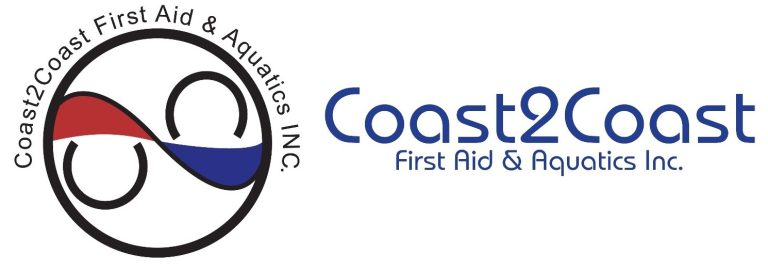You may be wondering what exactly is shock and how does it affect the body. When a person is ill or injured, their body can go into shock. Shock can affect the body in various ways because the vital organs do not get enough blood as it is not circulated effectively and therefore the oxygen they receive is drastically reduced. This lack of blood circulating in the body and blood pressure can lead to serious health complications.
Emergency Medical Responder training courses will help you recognize the signs of shock in a person. Shock is life-threatening and the person needs immediate medical attention.
Common Causes of Shock
Even if a person involved in a serious accident has not been badly injured, they can still suffer from shock. It can also be caused when there is significant fluid loss, especially if the person has been vomiting or has diarrhea that causes dehydration. Children are especially prone to dehydration because their body surface area is more than their weight.
Other causes of shock include septic shock caused by infections, anaphylactic shock caused by an allergic reaction or hypersensitivity, cardiogenic shock caused by damage to the heart and more. Extensive burns and blood loss or fluid loss can also lead to hypovolemic shock and trauma to the spine is called neurogenic shock.
How do you use an EpiPen for Anaphylactic Shock?
Mastering the use of an EpiPen is crucial in managing severe allergies. Join us in this concise YouTube short as we demonstrate step-by-step instructions on administering an EpiPen during an allergic reaction. Remember, always follow your doctor’s guidance for proper usage and dosage. Whether you’re a caregiver, allergy sufferer, have low blood pressure, or are simply preparing for emergencies, this video provides essential knowledge to ensure you’re ready to respond effectively. Watch now and prioritize your health with expert advice on EpiPen usage.
Be Ready to Respond to Shock Emergencies!
Join our Emergency Medical Responder (EMR) training and learn how to recognize and manage shock in critical situations. Our expert instructors will equip you with the knowledge and skills needed to provide immediate care.
Signs and Symptoms of Low Blood Pressure Shock
What exactly is shock, then? Shock can affect everybody differently and knowing what signs to look for can help you recognize it. If you are helping someone and suspect they are in shock, look for the signs and symptoms. The symptoms of shock might vary from patient to patient, but some people become drowsy or unresponsive while others feel nauseous or have bouts of vomiting. One of the main symptoms of shock is low blood pressure. Blood tests are essential for diagnosing shock, assessing organ function, detecting infections, and evaluating its severity by monitoring various biological markers in the blood, like blood flow, the number of blood vessels, and low blood pressure.
Also, look out for anxiety, agitation, a pale or ashen skin, cool or clammy skin, signs of weakness or confusion, excessive thirst and rapid breathing. Other signs of shock are dizziness, fainting, and a bluish tint to the lips or fingernails. People with dark complexions will have a grey tint.
Caring for Someone in Shock
If you notice that someone who is ill or has been in an accident displays the signs or symptoms of shock, you must call the emergency medical services (EMS) immediately. If you have first aid and CPR training, you may start performing first aid on the person to help reduce the cause of the shock. Those who have taken an Emergency Medical Responder training course will understand how to properly care for someone who is experiencing different types of shock.
Meanwhile, get the person to rest and keep them warm. Check their ABCs (airway, breathing, and circulation) and offer them reassurance and comfort until the emergency medical services arrive.
Seeing as the person’s condition may be severe, this could require emergency surgery. It is recommended to avoid providing food or drink to the person in case surgery is necessary.
Early recognition will decrease the effects of shock, so it is necessary to act quickly as shock may be irreversible.
How is Shock Treated?
Once the patient with shock is taken to the hospital, doctors will run tests and treat them according to the type of shock they have. Usually, doctors immediately administer IV fluids, and if the patient has septic shock, antibiotics are added. Epinephrine, diphenhydramine and steroid medications are used to treat anaphylactic shock.
In patients with cardiogenic shock, doctors race to treat the underlying problem. Minor hypovolemic shock is treated by administering saline intravenous fluids, but in extreme cases where the shock is from blood loss and the blood pressure drops, a blood transfusion is necessary.
When to Seek Medical Attention
If you or someone you know is experiencing any of the following symptoms, seek medical attention immediately:
Severe allergic reaction (anaphylaxis)
Septic shock
Cardiogenic shock
Abnormal heart rhythm
Blood clot
Spinal cord injury
Ruptured blood vessel
Symptoms of shock, such as low blood pressure, pale or cool skin, rapid or weak pulse, shallow breathing, confusion or loss of consciousness, nausea or vomiting, and headache or dizziness.
Remember, shock is a life-threatening condition that requires prompt and effective treatment. If you suspect someone is in shock, call emergency services immediately and provide first aid until medical help arrives.
How Can Shock be Prevented?
Not all shock can be prevented because sometimes it can be the result of an accident or injury. However, dehydration can be prevented and a person who is losing fluids because of diarrhea or vomiting should be given an oral rehydration solution.
Anaphylactic shock can be prevented if the person with the allergy always carries an epinephrine pen on them. If you know that you are allergic to something, it is best to avoid triggers to your allergy.
Heart disease and heart attack can be prevented with a yearly check-up and by maintaining a healthy lifestyle.
How Can Shock Affect a Person’s Vital Organs?
Shock can affect your body adversely if you don’t get prompt medical treatment. The cause of the shock will also predetermine the medical outlook. People with hypovolemic shock and anaphylactic shock usually respond well to medical treatment if it is started early.
Septic shock is more serious and the infection needs to be treated early. This requires fast identification of the infection and aggressive antibiotic treatment.
Cardiogenic shock is far more difficult to treat and, unfortunately, only about one third of patients recover. The spinal injuries that cause spinal shock are the most difficult to treat and has a very poor prognosis.
If the body is unable to successfully restore normal circulation on its own, restoring the blood flow may cause decompensated shock, which is life-threatening. Irreversible shock may occur if there is no intervention. This means that the brain, heart and other tissues are so damaged that the person will not survive.
Helping Someone in Shock
Learning First Aid and CPR can help you recognize when a person is in shock. Our Emergency Medical Responder training courses will cover the different types of shock and how to care for each. This in-depth course covers a variety of topics specifically for first responders.
If you are ever faced with a situation where someone is ill or injured, try and prevent them from going into shock. If they are already in shock, you can respond to the situation and perform the necessary first aid offering them immediate care after calling for help (EMS/9-1-1).
Register for First Aid Training
Register today for a First Aid Training course and learn how to deal with emergencies and keep your loved ones safe! Check out our facilities and book your spot now.























No comment yet, add your voice below!